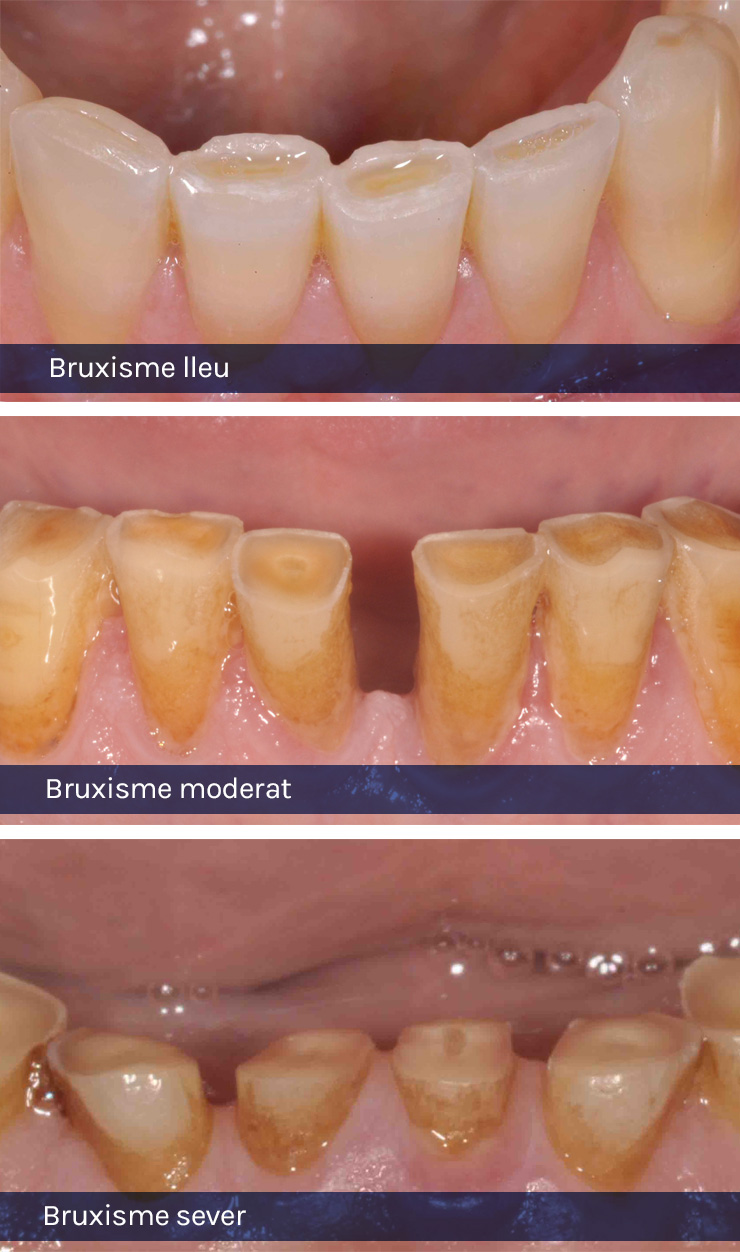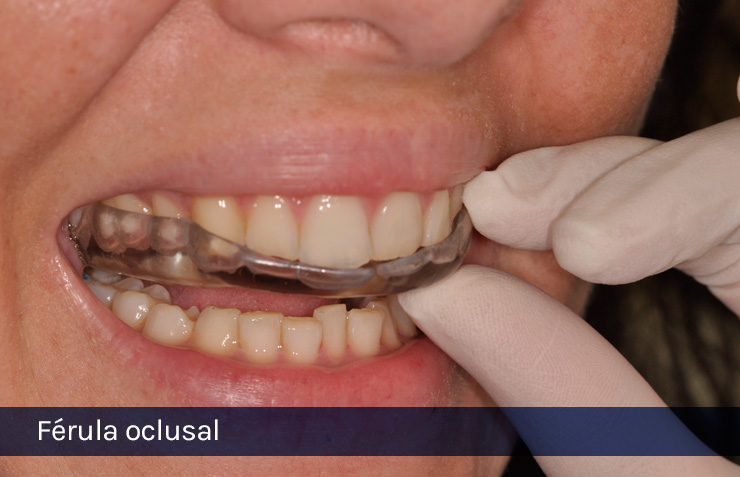Wednesday from 9:00am to 6:00pm. Friday from 9:00am to 5:00pm.
What is bruxism?
 Bruxism is involuntary teeth clenching usually occurring while sleeping at night, although it can also occur during the day when we perform activities that require concentration like driving, working at the computer or playing sports. If it persists over time or with a significant intensity it can cause serious tooth problems such as thermal sensitivity to cold, wear and tear and even cracks or fractures.
Bruxism is involuntary teeth clenching usually occurring while sleeping at night, although it can also occur during the day when we perform activities that require concentration like driving, working at the computer or playing sports. If it persists over time or with a significant intensity it can cause serious tooth problems such as thermal sensitivity to cold, wear and tear and even cracks or fractures.
Today it is one of the problems that most concern dentists, since it is increasingly affecting more people. The latest research suggests that sleep bruxism is caused by some kind of sleep disorders.
What is the TMJ?
The TMJ or temporomandibular joint is the joint that allows jaw movement and thus allows us to chew, speak and swallow. It is a joint with unique characteristics in the human body since the right and left sides must work in a coordinated and simultaneous way.
Alterations affecting the TMJ or the muscle that moves the jaw can cause different signs and symptoms, such as pain when chewing, headache, noise in the joint, limitation on opening the mouth and they can even block the jawbone.
How do we treat TMJ problems and bruxism?
TMJ is an anatomically complex joint which requires advanced knowledge to accurately interpret and treat the problems that affect it. Only after a thorough examination of the joint, of the cervical and mandibular muscles, of the way the teeth close and of the neurological functioning in the region can we choose the most appropriate treatment for each patient.
 The most recognized treatment for solving the problems of TMJ and bruxism has always been occlusal splint or bite splint. This device consists of a transparent resin that prevents contact between the teeth, relaxes the muscles and helps the jaw to find its rest position. The correct design and individual adjustment of the occlusal splint is a determining factor for the treatment’s success.
The most recognized treatment for solving the problems of TMJ and bruxism has always been occlusal splint or bite splint. This device consists of a transparent resin that prevents contact between the teeth, relaxes the muscles and helps the jaw to find its rest position. The correct design and individual adjustment of the occlusal splint is a determining factor for the treatment’s success.
The treatment is often complemented by physiotherapy, thermotherapy, self-measurement and even acupuncture.